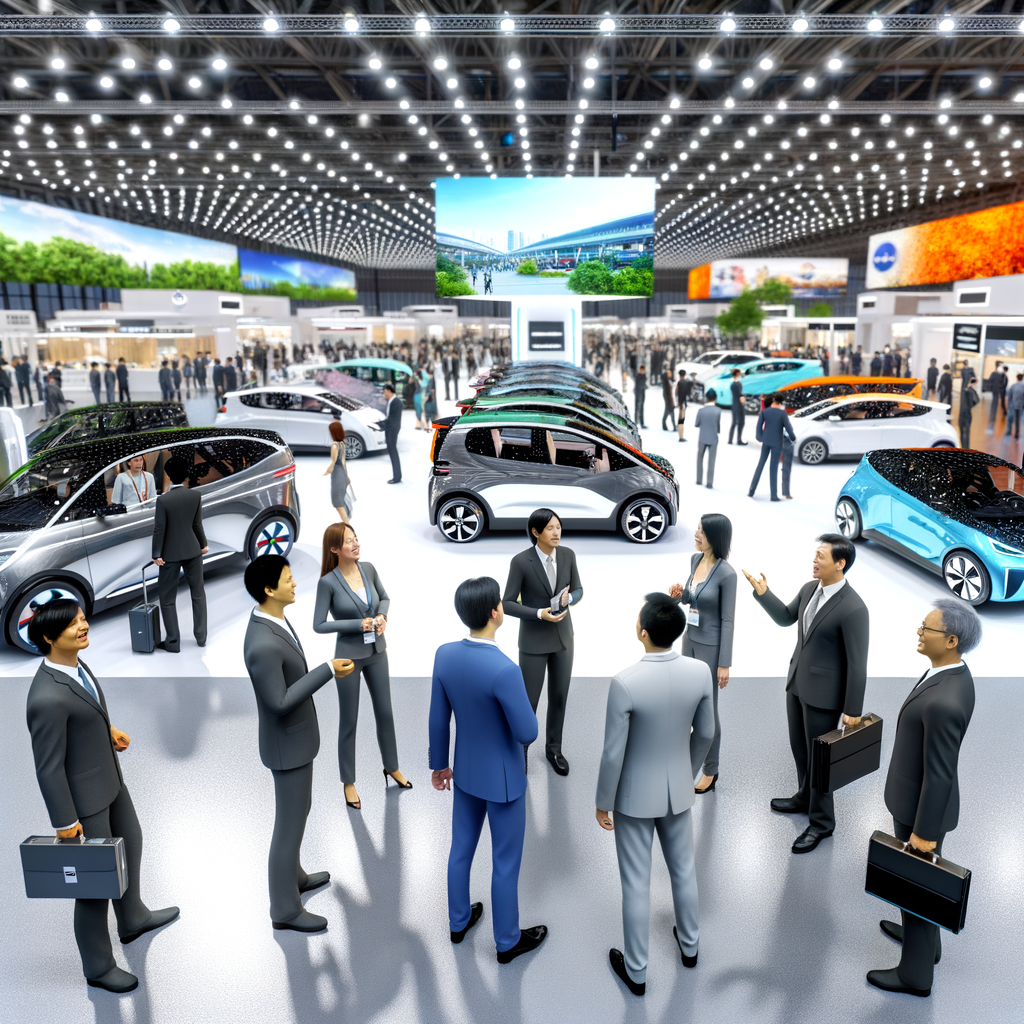Foreign automakers are leveraging strategic partnerships and joint ventures with domestic car brands to navigate China’s regulatory landscape and tap into the largest automotive market. Focusing on electric vehicles (EVs) and new energy vehicles (NEVs) to meet consumer preferences and benefit from government incentives, these international players are adapting to the growing economy and rapid urbanization. Their success in addressing environmental concerns and staying ahead in market competition depends on understanding technological advancements and aligning with China’s sustainable development ambitions. This collaborative approach is key to conquering the complexities of market entry and capitalizing on the opportunities in China’s dynamic automotive sector.
In the heart of the global automotive sphere, China’s position is unparalleled, reigning as the largest automotive market in terms of both production and sales. This dynamic powerhouse, driven by its rapidly growing economy, expanding middle class, and swift pace of urbanization, has emerged as a cornerstone of the global car industry. The Chinese market is a melting pot of domestic and foreign car brands, with a marked shift towards Electric Vehicles (EVs) and New Energy Vehicles (NEVs) fueled by government incentives and mounting environmental concerns. Foreign automakers, in their quest to tap into this vast and lucrative market, often find themselves forging strategic partnerships with local Chinese companies. These alliances are not just a business necessity but a strategic maneuver to navigate the intricate regulatory landscape that defines the Chinese automotive sector.
This article delves deep into the nuances of the Chinese automotive industry, offering insights into how foreign automakers are making inroads through joint ventures, the electrifying surge of EVs and NEVs in China’s urban expanse, and the regulatory frameworks shaping the market dynamics. We explore consumer preferences that drive the market, the technological advancements propelling the industry forward, and how environmental concerns and government incentives are steering China towards a greener automotive future. From examining the growth of China’s economy and its global impact to understanding the power of collaboration between Chinese firms and top foreign automakers, this comprehensive analysis sheds light on the competitive yet collaborative landscape of China’s automotive sector. Navigating through urbanization trends, growing demand, and strategic partnerships, we provide a detailed overview of what makes China the largest and most dynamic automotive market in the world.
1. **Navigating the Terrain: How Foreign Automakers Forge Strategic Partnerships in the World’s Largest Automotive Market**

In the heart of the world’s largest automotive market, foreign automakers are keenly aware of the lucrative opportunities that China’s growing economy and expanding urbanization offer. With the Chinese market’s insatiable demand for both domestic car brands and international models, especially Electric Vehicles (EVs) and New Energy Vehicles (NEVs), these global companies are navigating through a complex regulatory landscape to establish a foothold. Strategic partnerships, often in the form of joint ventures with local Chinese firms, have become a vital tool for accessing the vast consumer base while adhering to the country’s stringent regulations.
The shift towards EVs and NEVs is heavily influenced by government incentives aimed at addressing environmental concerns and promoting sustainable development. This policy-driven push has positioned China as a leading market for electric mobility, with both domestic and foreign manufacturers racing to capitalize on this trend. Technological advancements play a critical role in this sector, as companies strive to meet consumer preferences for innovative and eco-friendly transportation solutions.
Foreign automakers find that forming joint ventures with local partners is not just a regulatory necessity but a strategic asset in understanding the nuances of the Chinese automotive market. These collaborations offer invaluable insights into consumer behavior, preferences, and expectations, enabling foreign brands to tailor their offerings to meet the unique demands of Chinese customers. Moreover, local partners provide a navigational guide through China’s complex regulatory environment, ensuring compliance and facilitating smoother market entry and expansion.
The competitive landscape in China is intense, with market competition not just between domestic and international brands but also among foreign automakers themselves. Success in this dynamic environment requires more than just technological innovation or government incentives. It hinges on the ability to forge strong strategic partnerships, understand and adapt to local consumer preferences, and remain agile amidst rapid urbanization and changing environmental policies.
In conclusion, the journey of foreign automakers in the largest automotive market is marked by challenges and opportunities. The keys to unlocking the potential of the Chinese market lie in leveraging strategic partnerships, aligning with government incentives, staying at the forefront of technological advancements, and continuously adapting to the evolving tastes and concerns of the Chinese consumer. As the landscape of the automotive industry continues to evolve, these strategic collaborations between foreign and domestic players will undoubtedly shape the future of mobility in China.
In conclusion, the journey through the vibrant and ever-evolving terrain of the world’s largest automotive market reveals a landscape filled with opportunities and challenges alike. As foreign automakers and domestic car brands alike navigate the complex regulatory landscape of China, the significance of strategic partnerships becomes increasingly apparent. These alliances, often in the form of joint ventures, serve as critical conduits for accessing the vast consumer base, driven by a growing economy, urbanization, and a burgeoning middle class with a keen interest in electric vehicles (EVs) and new energy vehicles (NEVs).
The Chinese automotive market stands at the forefront of technological advancements and environmental concerns, propelling the demand for EVs and NEVs. This demand is further bolstered by government incentives aimed at promoting cleaner modes of transportation. Here, both foreign and domestic players must align with consumer preferences that are deeply influenced by sustainability, innovation, and quality.
Understanding the intricate dynamics of market competition, regulatory requirements, and the pulse of consumer desires is essential for success in this competitive arena. The allure of the Chinese automotive market, characterized by its sheer size and potential for growth, continues to draw players from around the globe. However, only those who adeptly manage to forge and nurture strategic partnerships, remain attuned to technological advancements, and stay responsive to shifting consumer preferences and government policies will thrive in this lucrative but challenging environment.
As we look to the future, the China automotive market is poised to remain at the epicenter of the global automotive industry’s growth and innovation. With its emphasis on electric and new energy vehicles, China is setting the pace for the automotive world, underscoring the importance of adaptability, strategic planning, and a deep understanding of the local market dynamics. For foreign automakers and domestic brands alike, success in China’s automotive market is not just about selling cars; it’s about embracing change, driving innovation, and contributing to a sustainable future.






